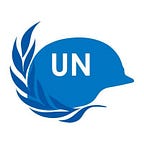Strengthening protection: 20 years of Protection of Civilians in UN Peacekeeping
The protection of civilians mandate is defined as preventing, deterring or responding to threats of physical violence against civilians “through the use of all necessary means, up to and including deadly force.” It is implemented through three tiers: protection through dialogue and engagement, provision of physical protection, and establishment of a protective environment.
Through the Action for Peacekeeping initiative (A4P), the UN Secretariat, 152 Member States and 4 regional organizations have committed to strengthening protection by peacekeeping operations as a priority.
In commemoration of the 20 years (1999–2019) during which protection of civilians (POC) has been included in the mandates of UN peace operations, we are highlighting the work of our peacekeepers in the below photo essay. These photographs are also part of an exhibit on protection of civilians held at UN Headquarters in New York.
Troops from the United Nations Mission in Liberia (UNMIL) cross a make-shift bridge during a patrol in Gbarnga, Liberia. Patrols, particularly foot patrols such as this, enhance the UN’s visibility, thereby serving as a confidence building tool for communities to feel secure, while also deterring potential threats. (2008)
The United Nations Mission in the Democratic Republic of Congo (MONUC) distributes information leaflets on a programme in South Kivu, Democratic Republic of the Congo. Strategic communications help to influence the behavior of armed actors, prevent or stop attacks on civilians, counter dangerous rumours or misinformation, encourage respect for international law, support peace and reconciliation, and explain the Protection of Civilians mandate and manage expectations. (2008)
The Special Representative of the Secretary-General of the UN Operation in Côte d’Ivoire (UNOCI) visited localities where she appealed for peace and calm and encouraged maintenance of social cohesion. The Head of Mission is accountable for the implementation of the POC mandate. Mission leadership plays a pivotal role in ensuring POC is prioritized within a mission, while engaging with government officials, armed actors, and local communities to protect civilians. (2015)
Members of a battalion in the United Nations Stabilization Mission in Haiti (MINUSTAH) rescue children from an orphanage in Port-au-Prince that was destroyed by hurricane “Ike“. While POC mandates generally focus on armed conflict, in places such as Haiti, UN peacekeeping missions have also protected civilians in contexts of humanitarian disasters, including post-hurricane and post-earthquake response efforts. (2008)
United Nations Interim Force in Lebanon (UNIFIL) peacekeepers conduct a foot patrol in south-eastern Lebanon, despite the snow and icy conditions. POC can require peacekeepers to conduct their work in difficult conditions and challenging terrain, endeavoring to access even the most remote of areas. (2019)
A police officer serving with the African Union-United Nations Hybrid Operation in Darfur (UNAMID) interacts with residents of an internally displaced persons camp, near El Fasher, capital of North Darfur. Community-oriented policing leverages community partnerships to prevent and deter violence, and help design more resilient, sustainable protection strategies. It can also contribute to confidence building between local communities and state security actors. (2014)
Peacekeepers serving with the United Nations Organization Stabilization Mission in the Democratic Republic of the Congo (MONUSCO) patrol a town in North Kivu Province. Proactive military and police posture, mindset and operations serve to prevent and deter threats from materializing, while taking all efforts to minimize harm to civilians. (2013)
A Community Liaison Assistant (CLA) working for the United Nations Organization Stabilization Mission in the Democratic Republic of the Congo (MONUSCO) meets with residents in Goma, North Kivu. CLAs play a pivotal role in protecting civilians by connecting communities to the UN, bridging communication gaps between uniformed components and the local population, establishing community alert networks, and discerning the threats present at the local level and the protection concerns of the population. (2013)
A peacekeeper from the United Nations Mission in South Sudan (UNMISS) helps a woman from a POC site in Bentiu, South Sudan, lift up a stack of collected firewood. To respond to identified threats, in consultation with communities, peacekeepers provide area security and physical accompaniment for vulnerable populations. (2015)
In Birao, Vakaga Prefecture, peacekeepers in the United Nations Multidimensional Integrated Stabilization Mission in the Central African Republic (MINUSCA) provide security by conducting daily patrols and regularly organizing civil-military activities. Community engagement is the cornerstone of all POC efforts. It helps peacekeepers to understand and respond to threats, support communities’ self protection mechanisms, and sensitize the local population on the mission’s mandate. (2013)
Investigations, which may employ specialized capabilities such as forensic police, contribute to advocacy with armed actors and accountability for serious crimes, as well as informing POC analysis and threat mapping. Despite all the efforts of local, national and international protection actors, including peacekeeping missions, civilians still represent the majority of casualties in armed conflicts. POC remains a priority mandate for the largest peacekeeping missions today. (2019)
